Plans for a new long-range strike missile jointly developed by the UK and Germany remain in the early conceptual stage, with key technical decisions yet to be finalised.
The missile, announced on 15 May as the first major milestone under the Trinity House Agreement, is intended to have a range exceeding 2,000 kilometres. It was unveiled by Defence Secretary John Healey and his German counterpart, Boris Pistorius, during a ministerial summit in Berlin.
Despite the high-profile launch, responses to recent parliamentary questions confirm that critical aspects of the programme remain undefined.
Asked whether the missile will be a cruise, ballistic or hypersonic weapon, Defence Minister Maria Eagle replied: “UK and Germany are considering several concepts and technologies to address emerging threats and have defined a joint range requirement of over 2,000 km. Specific characteristics, in-service dates and launch platforms are to be confirmed.”
The same answer was repeated in response to questions about the potential need for a bespoke launch vehicle and the projected in-service date.
MPs James Cartlidge and Luke Akehurst submitted a series of questions between 22 and 27 May seeking clarity on the weapon’s specifications, launch method and development timeline. Each was met with the same response, confirming that the project remains in the design assessment phase.
The Ministry of Defence had previously described the missile as one of the most advanced systems ever designed by the UK, with the aim of strengthening NATO deterrence and supporting European defence industry growth.
For now, however, the weapon it seems remains an ambition rather than a defined programme.


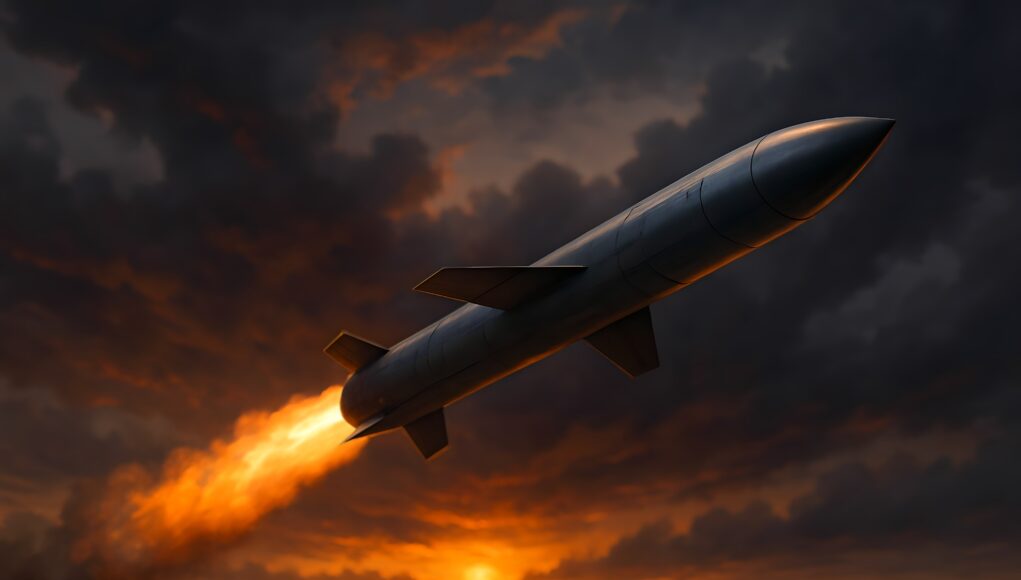
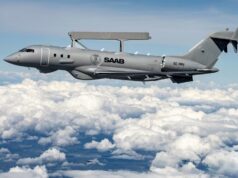

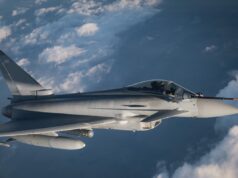
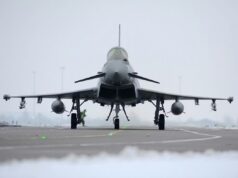
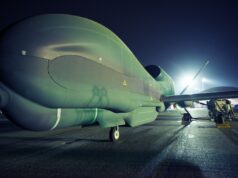

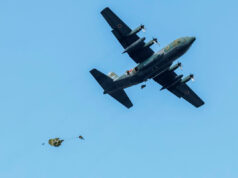


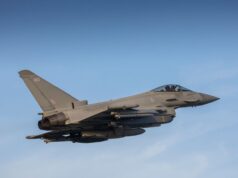

I think this could be one of the most important new weapon systems we are to develop. FC/ASW is important but it’s replacing some very good missiles in service like Storm Shadow and Exocet.
This weapon is a completely different class and it seems like it’s the only weapon system we will have to counter Russian tactical nuclear weapons. It will also go along way to replacing US forces in deep strike.
This could give us a fairly cost effective way to launch several hundred weapons at Russia from the comfort of Shetland or East Anglia. It can do it all from low cost truck launchers like Typhon freeing up other missile launching platforms like T26 or Astute class.
If combined with a large array of SAR satellites it may even give nations like the UK or Germany the ability to knock out all of Russia’s mobile nuclear weapons and silo based launchers in one go.
It does sound like a very useful addition.
Interestingly, the distance by air from Shetland to Murmansk is apparently c.1,900km or c.1,000nm.
We just need to load Shetland up with a bunch of sky Sabre, SAMP/T and a few hundred of these and we have a North Atlantic Death Star 😀
You’re talking then of a first strike weapon if its aimed at Russian nuclear assets and c3, which Russia will be hyper sensitive over as they were in the Cold War with Pershing and GLCM.
Russian silo based ICBM are often much further eastward, in the Urals and beyond, well beyond range.
And if their mobile missiles are vehicle borne, but garrisoned in peacetime, where would you strike in such a first strike scenario, they’d be hard to target.
Seems too far fetched to me. It is good to hold Russian targets at risk, but I remain concerned this takes cash away from other areas that need investment now.
I was very much thinking Russias ICBM’s would become targetable from somewhere like Poland rather than UK. The idea would certainly be to hold the targets at risk especially by non nuclear states like Poland and Germany.
Loosing most of his nukes in the space of an hour would surely make even Putin think twice.
The issue is someone targeting your strategic deterrent directly is essentially a full launch criterion for all the nuclear powers… essentially rule one is you don’t strike another nuclear powers strategic arsenals..
Even if you did take out Russias ICBMs with a snap counter force strike.. your not getting its ballistic missile submarines and it usually has 3-4 of those out and up to another probability 3 ready to surge if needed.. they each have 96 warheads so at worst Russia will be be able to fire 288 nuclear warheads..from its subs then it has around 84 mobile launchers for ICBMs.. if you don’t catch them that is another 18 1 MT city killing warheads and around 200 more 200kt warheads… then its probably got a couple of hundred single warheads mobile short range systems that can happily use against the Eastern European nations ans Germany..
Remember the rule of thumb is 100 warheads at 50-100kt will remove 10% of the worlds food production for up to 10 years.. so even if you kill Russias airfields and it’s silo based ICBMs it’s still get a counter value reply which is essentially MAD ( if one side can get off 500 warheads and the other side responds with the same..civilisation and most of humanity is dead from starvation within a few years.
Scary stuff, however we are now looking at scenarios where non nuclear powers (Japan, Germany, Poland, Taiwan) may be engaging nuclear powers ( Russia, China) with mass deep precision strike capability in response to a nuclear attack. These countries may very well have a different view on what is and isn’t an acceptable target as opposed to a nuclear power.
It’s also highly likely that we will soon be factoring in terminal missile defence capability (US golden dome) and also asking some serious questions as to the maintenance quality of Russias nuclear stock pile.
Precision weapons and radar satellites also make it very difficult to simply have you r missiles on road mobile launchers in a forest.
Nuclear war tactics are rapidly changing.
Agreed. Depending on how the contracts are written it could give the UK a lot more indepoendence, and possibly even open up the chance of developing a tactical nuclear option – lack of which is a major gap in European defence systems.
Its absolutley crucial that this new missile is capable of housing a nuclear warhead when required
Ultimately there is only one real word that Russia truly respects – and that is nuclear.
Or the ackronym MAD.
Honestly.. if they are building a meduim/intermediate range ballistic missile then it’s going to bleed into the future strategic deterrence… no one builds 2000km ballistic missiles without the idea they are going to stick a nuclear warhead on it…
I think this may be Germany looking to move into the strategic deterrence game.. if this goes ahead it would not surprise me at all if they did not stick a UK nuclear warhead on it and a number of theses get based in Germany under a duel trigger..
I’d say this is more at a tactical level rather than strategic, but it does open up possibilities.
Hi Rob 2000km range is definitely considered a strategic system.. tactical systems are generally considered to be less than 1000km range.
Agreed, but as I said ‘more at tactical level’ – I would doubt they would be used as a strategic weapon. Longer range keeps the launcher away from counter measures. I think ranges are getting a lot longer now and I think tactical and strategic are more a matter of useage rather than a range definition.
It’s inherently dangerous having lots of nuclear weapons on long range land launched cruise missiles.
It means you can lunch a massive nuclear strike that the enemy does not know about until the bombs start exploding.
This can make the other side very jumpy. It’s why the US and Soviets eliminated such weapons in the 80’s.
If the enemy knows you have no nuclear warheads on these you can salvo a couple of hundred at them as a response to a tactical nuclear strike without starting world war 3.
Jim, right now, Europe has no response of the same weapon against Russia. Until we develop a missile capable of carrying a tactical warhead we remain vulnerable to attack by such a system. Some serious military experts fear a tactical attack outside Ukraine by Russia, and sadly, it may be sooner than we think. The UK can not use its deterrent as a response due to the unthinkable consequences, hence the importance of this joint weapon with Germany.
Deterrent. That’s the key word. If you have tactical nukes and your enemy doesn’t there is an issue – if they lauch tactical nukes, how do you respond? If you have your own you can make a proportional response. If you don’t, either you have to go full nuclear or conventional – which is like bringing a knife to a gun fight.
Hi Rob remember strategic and tactical weapons are defined by a usage which is utterly range specific ,.. a tactical weapon system is essentially one used on a battlefield.. so a harrier is tactical weapon as it’s not designed to attack deep into a nation beyond the battlefield but a tomahawk missile is considered a strategic weapon as you use it to attack beyond the battlefield and disrupt the national infrastructure, destruction wise a harrier could cart around and drop on your head 5 1000ib bombs.. the tomahawk only has single 1000ib warhead.., so 20% of the destruction of the tactical harrier..
We get a bit confused and tie in destructive power with strategic weapons.l because generally a longer range system can also carry more.. and ICBM can carry a lot more warhead than a short range missile.. but it’s actually the range that defines it as a strategic weapon.. if you put a 50kt warhead on a 10,000km range ICBM it’s still a strategic weapon.l you put that same 50kt warhead on a 200km range short range ballistic missile it’s a tactical nuclear weapon.., its range that defines and is it atttacking the battlefield or the nation beyond the battlefield.
It is, as you say, a range thing. Question is: how big is the battlefield? If battlefield artillery, drones and missiles keep increasing their range, then the battlefield is bigger. If you are hitting hardware that is attacking the battlefield, then you are using your weapon as a tactical device. Distinctions are being blurred all the time which is why I’m thinking that a weapon that would be considered in the past to be strategic can be used tactically, and I’m inclined to think that that would be a (or the) major use of these systems.
With current systems, you can find, navigate to and hit a tactical target at a far greater range than you could in the past.
I deed and some platforms are both tactical and strategic.. an SSN is the classic example it can fight a battle or it can be a strategic platform.. striking at great distance from the battle….an F35b can be a tactical fighter.. but if you pop it on a carrier it can steam where you will and launch strategic strikes on a nation.. a typhoon.. again a tactical fighter.. can be armed with long range cruise missiles and have tanker support giving it strategic strike range of 1000s of Km.
It is one of the things the UK still excels at..the number of strategic platforms we can deploy for the limited size of our forces.. really as an island well away from our major enemies most of what we have should be strategic capabilities ( why we have SSNs instead of electric boats..why the carriers are so important etc).
Wont a convential response to a tactical nuclear strike just embolden the enemy?
Not if a conventional response takes out an enemy’s nuclear power station. Won’t be a big bang like a tactical nuke, but will probably kill more long-term and render a larger-area uninhabitable.
Bunker-buster munitions to take out the containment building and expose the core. Then maybe thermobaric to ensure the remains of the fuel rods are spread over as wide an area as possible. Would take a concerted strike as reactors are hardened against earthquakes/ terrorism etc. but the effect on the host nation would be on par or greater than a tactical nuke.
It could give the UK and Germany a cost effective method of deterring any moves on NATO territory.
If the Ru Northern fleet, submarines in dock and supporting dockyards can be hit by large strikes of conventionally armed missiles that becomes a high risk game for Ru. Same as if the infrastructure around Moscow can be hit and it’s railway pinch points that their army depends on for logistics.
That gives a safer escalation point than trying to slow an advance and use of tactical nukes.
If both nations deployed 3-5 thousand of these based on trucks or gives Ru a big problem.
Doesn’t conventionality in warfare breed horrendous meat-grinding on the battlefield as in Ukraine? NATO needs deterrence not carnage. Only nuclear can level the playing field where small countries walk tall with the big guys. In the way the colt 45 rvolutionised man to man combat and the little chaps scared the hell out the slower big guys. That’s why Israels got nukes. Unfortunately nukes breed respect.
Doesn’t all this talk of a 2000km+ missile make for prioritising sufficient GBAD so the UK also has adequate protection for what can be thrown over the fence back at us right now?! Where’s any announcements on multi tiered GBAD? Higher level CAMM-MR, SAMP/T, additional radars and not just Shorad?
Indeed. I say this underneath many similar articles around offensive missiles, but defence should take precedent over attack, especially with the limited resources afforded to the British military.
Aster, CAMM, Asraam, are all there now. The Raven is great and innovative and could possibly be upgraded to a 3-4 missile launcher. They could order another 100-200 Aster for a land based SAMP/T system to share with the Navy and made compatible with mk41 so can be spread across the fleet more broadly. They could come up with a universal type missile launcher for all these missiles and maybe even a containerised arrangement that could go onto rail, barge, truck and ships. Its all been said before by many here.
I agree with the sentiment, though I doubt Aster will ever be integrated into Mk41, nor is it IMO likely to form a long-range GBAD system for the UK, given its age and expense. I expect that as a whole, the RN is trending away from Aster in favour of British and American solutions, given recent Type 83 developments.
Raven is cheap and quick to produce, that’s an easy win. Sky Sabre is another easy win, and CAMM is also
pretty cheap. CAMM-ER is already available for use if a medium-range solution is desired, and CAMM-MR is
under development for an even longer range.
But yes, overall, there are simply GBAD solutions and they should be prioritised over yet another offensive system.
Having missiles is carrying a big stick.
Having GBAD is carrying a shield.
Tactical nuclear weapons are a dangerous escalation of a conventional war to a full blown nuclear holocaust. Nothing will be acheived by us having tactical nuclear weapons, unless we are all willing to die, either from the explosion, direct fall out or even a change in the wind directiion. Europe is a very small place.
Geoff.. the issue is deterrent and the full strategic deterrent does not work with the way Russian nuclear doctrine now works..essentially the Russians are a bit loopy and their doctrine now talks about escalation to de escalate.. essentially Russia believes that if you need to deescalate one thing you can do is drop a tactical nuclear weapon.. because it does not believe the west would go strategic and trigger MAD if it tried a tactical nuclear escalation to de escalate.. the only thing that really prevents or acts as deterrent to Russian doing that insane thing in a war is if you have a sub strategic nuclear response.. it’s why the U.S. has free fall nuclear bombs in Europe and why France has a 100kt air launched weapon…France does not even call its air launched weapon a tactical nuclear weapon ( because it has not interest in using it tactically) its a sub strategic nuclear deterrent.. essentially a last shot across the bows before it goes full strategic deterrent and triggers MAD ( which is actually quite close to Russias escalate to de escalate accept it’s not as loss as Russias idea)..
So essentially if they did put a nuclear warhead on this medium/intermediate range missile, it would not be a tactical nuclear weapon it would be a sub strategic deterrent..with a last ditch stop or we all die usage.
Good point
The problem remains though. Tactical nuclear weapons are devistating, akin to ICBM’s in capacity. The Hiroshima and Nagasaki bombs were arrox. 15 and 20 KT respectively and killed and/or maimed between 250,000 and 400,000 people, mostly civilians. Imagine,as you mentioned, a 100KT bomb hitting Birmingham, London or Manchester. One million?; Two million?; Three…maybe even more dead and maimed. “Small nukes” are not worth the cost. We would be far better off creating a shield against attack from the air in any form.
There is no true shield that the UK could realistically afford. For the past 70 years if you want to stop the enemy doing something you make it plain you will do the same back x10.
Russian doctrine doesn’t care if you have tactical nukes or not, they will still use them to stop loosing conventional wars. However if you have 100 tactical nukes to use back they will be mad to try it. Basic deterrent.
You cant judge Russian nuclear policy by western standards, their war colleges train senior offices to use tactical nukes to get out of conventional situations, they see it totally differently to the west.
Hi Geoff unfortunately that is physically impossible to do.. the US sky dome is essentially a fantasy.
The reason is it’s far far more resource efficient to attack than it is to defend..
The US ground based interceptors are a great example of this..
Essentially the US has managed about a 50% interception rate with the Ground based interceptors..
But its needs one ground based interceptor for each warhead and an ICBM generally carries 6 warheads
An ICBM can target any part of the US but because of physics a GBI can only cover around 30% of the US..
So to protect against 1 ICB the US needs to build around 36 ground based interceptors.. each of those interceptors is a multiple stage orbital booster that costs the same as an ICBM..
Essential the US is has spent 90billion so it can intercept 1 or 2 ICBMs worth of warheads…it’s far cheaper therefore for your enemy just to keep pumping out ICBMs to overcome your defence ….
Afternoon Andy and Jonathan…You’re right but I didn’t make myself clear. I didn’t mean ICBM’s. I was thinking of air power in a broader sense. Aircraft, Cruise missiles, drones and so on. I can’t see how we are going to defend ourselves against a nuclear attack other than by maintaining the deterrent.
Correct me if I’m wrong, but is this not the third major long-range land-strike missiles programme the UK is no involved in? There’s the FC/ASW, the sovereign hypersonic missiles (by 2030) and now this as well. Whilst I acknowledge that these systems all have different roles and capabilities, would it not be more prudent to distribute the funds for these projects amongst other areas, such as missile defence?
Like it or not, the UK is not the USA, and as such does not have the funds to finance every project. Does the UK need a third long-range missiles, or a sovereign hypersonic strike capability, more than it needs improved GBAD and/or improved recruitment?
The hypersonic missiles gets on my nerves especially, given that it is essentially a prestige project more in the vein of Russia or Iran. What battlefield purpose would having a hypersonic missile actually serve, that could not be accomplished by TLAM or FC/ASW?
Ignore the strange pluralisation of ‘missile’, autocorrect was playing up.
Not sure I would expect the politicians to be giving out specifications at any stage. They have given thier user requirements now allow the designers to design – they are the expects after all. Not sure Maria Eagle can or should make a career change now.
Looking at the top level requirement of 2000km range. If this is a subsonic cruise missile, it puts it in direct comparison with Tomahawk (TLAM). Is this a European alternative perhaps? I feel there is a need for gold and silver standard types of cruise missile. Where we have FCASW as the gold standard, being super stealthy but expensive, perhaps being used in areas with capable air defences. Then there’s the cheaper less stealthy silver standard. Which could be used for either saturation attacks or against less protected targets.
The other option could be an intermediate range ballistic missile, which could be either armed with a conventional warhead or thermonuclear. Which could be used to target high value infrastructure nodes, such as train marshaling yards, bridges etc.
The third option of a hypersonic glide vehicle/cruise missile, I feel would come under the AUKUS remit. So would much less likely.
It is essential that a clear line is held between nuclear and conventional weapons. Any new long range system should be conventional to avoid the risk of drifting progressively from tactical to all out nuclear exchanges. The main aim is to deter the kind of attacks Russia is currently inflicting on Ukraine . Russia has said that any missile attacking its territory will be assumed to be nuclear, triggering an immediate retaliation. That hasn’t happened despite Storm shadow hitting targets in what Russia claims is its territory. It is therefore reasonable to infer that Russia, like Israel, is reluctant to start the process leading to all out nuclear war.
Whether Britain and France need to increase their strategic nuclear capabilities to compensate for the perceived weakening of the US nuclear umbrella is a separate question.
Israel has strategic and tactical solutions. That has nothing to do “the world’s leading experts” from the SIPRI… (smiley) Regards and Shabbat Shalom.
But don’t forget our German partner, who needs a credible internediate nuclear ballistic missile to rattle Russia. Russia has a longstanding phobia about Teutonic rearmament and such a missile would send a clear statement that Germany, now with billions in debt-brake money, is not to be taken lightly and that this sleeping giant has woken up militarily, irrespective of now redundant treaties and is not to be taken lightly any longer.